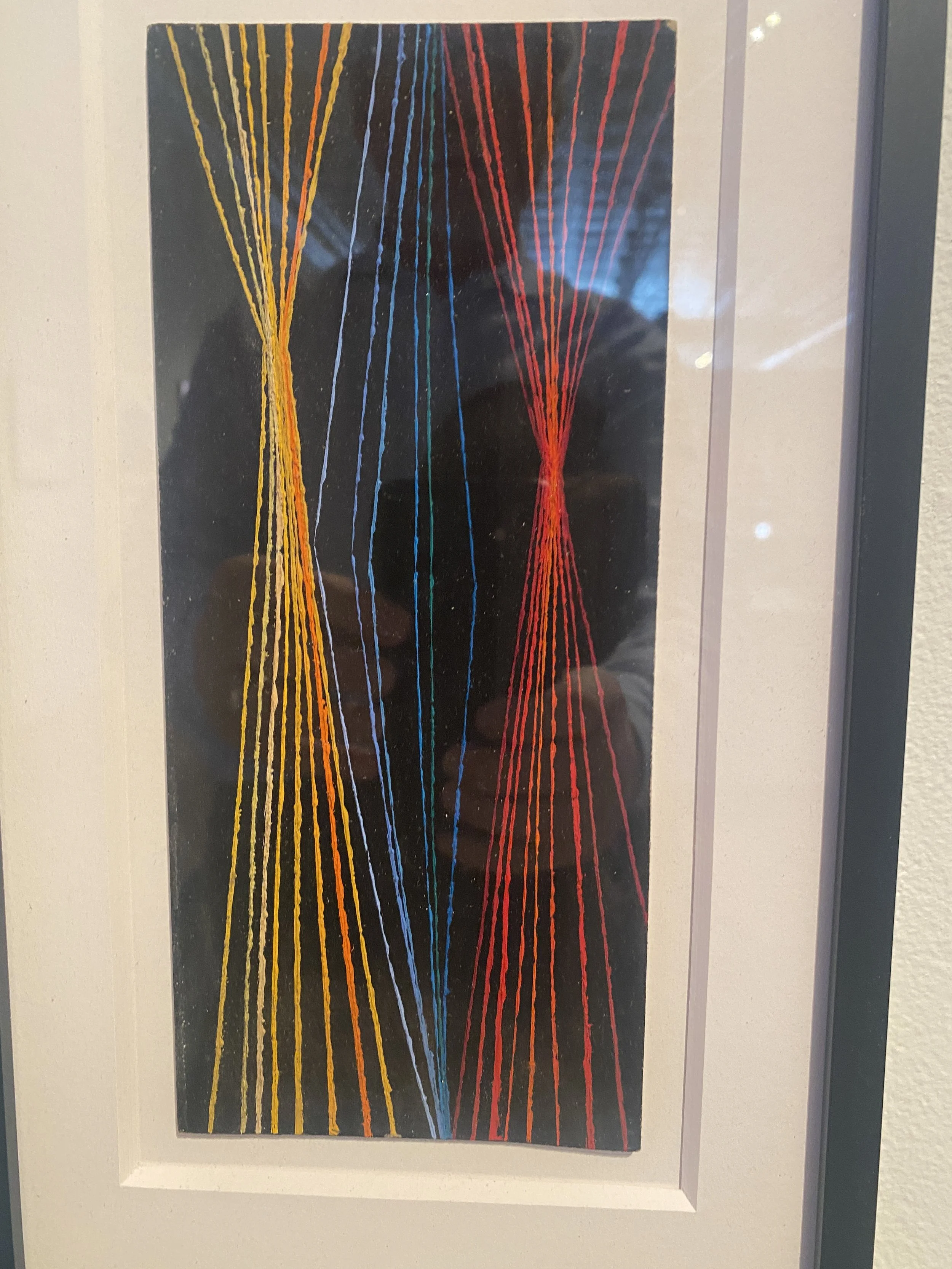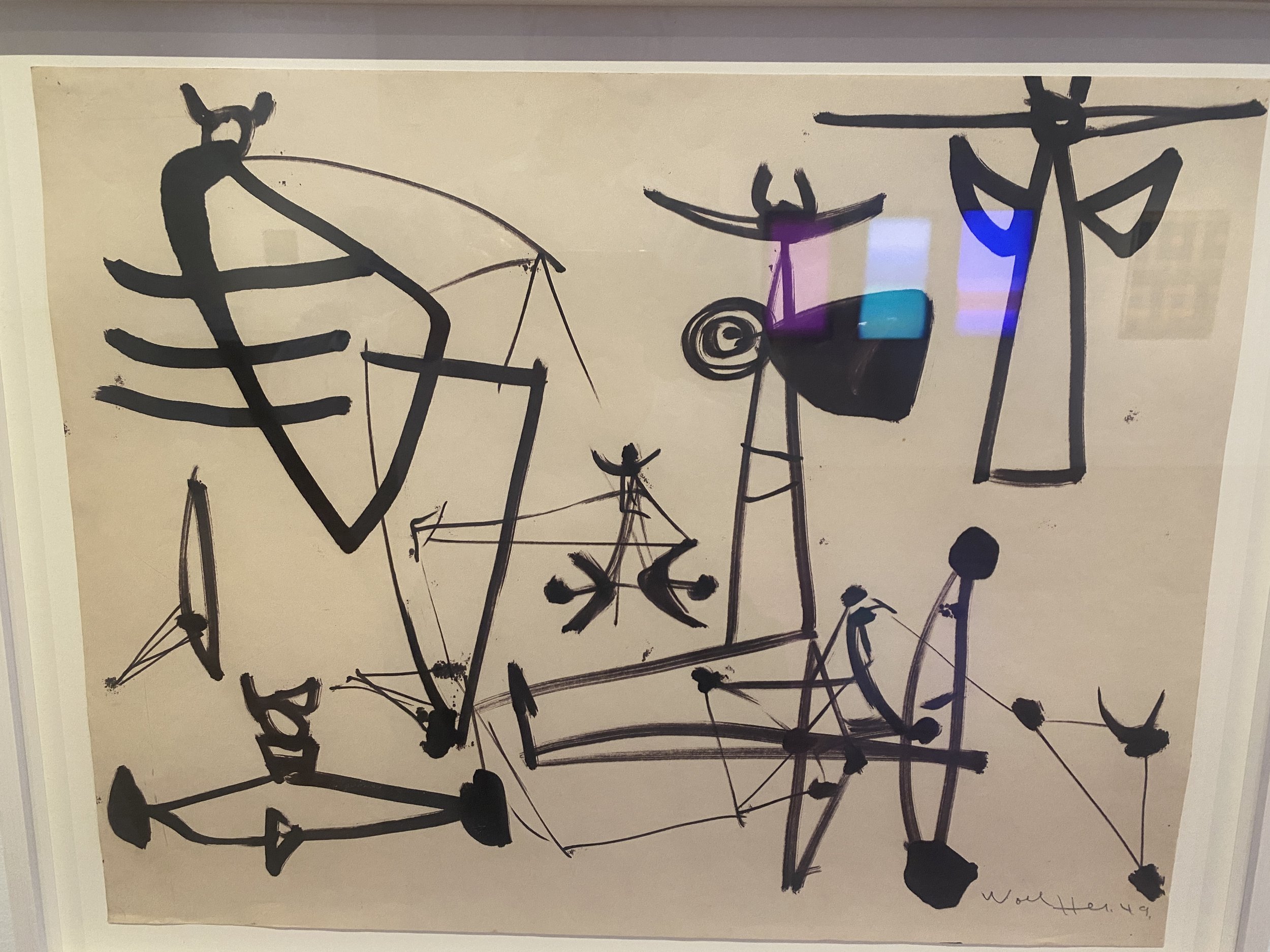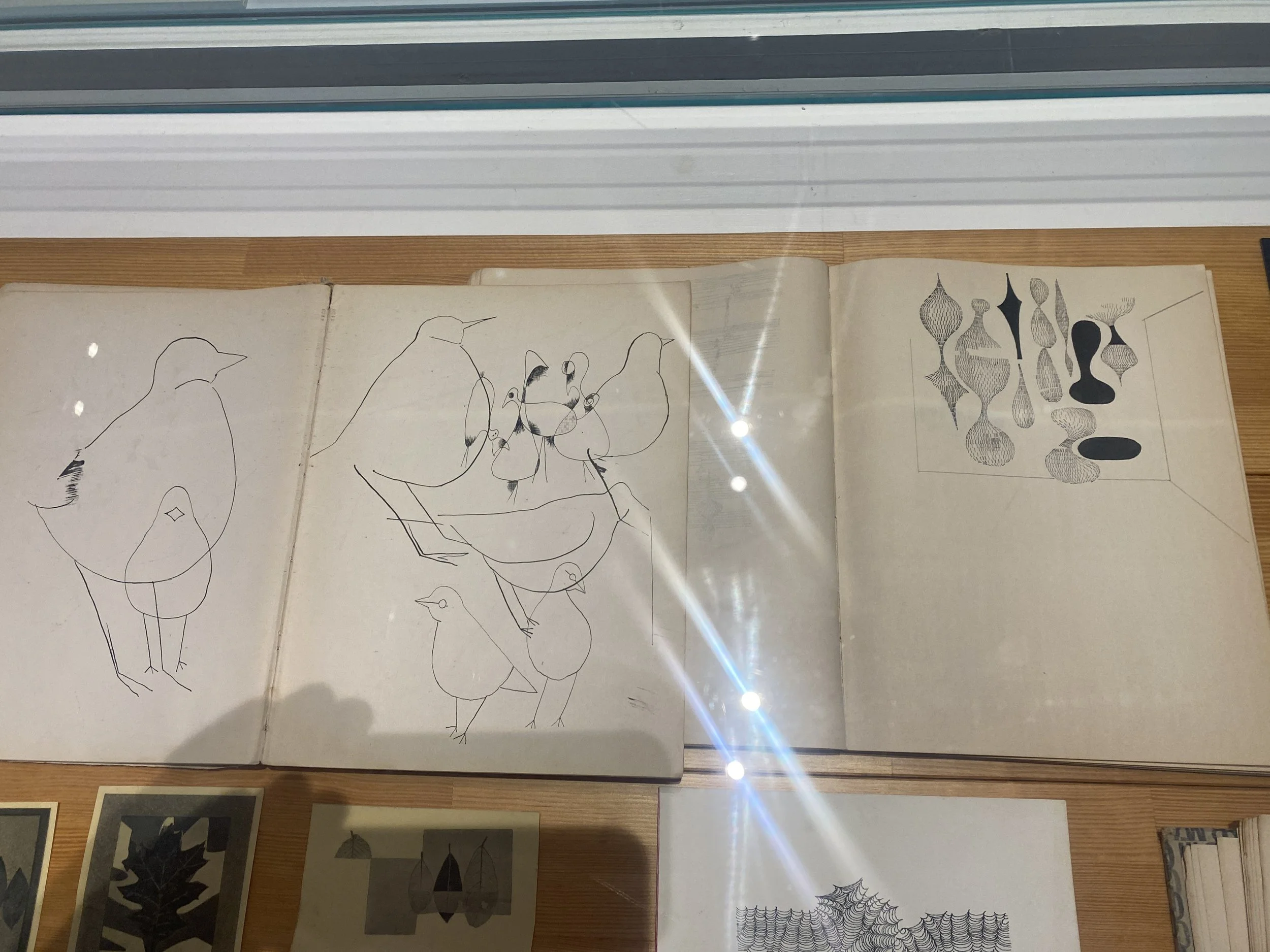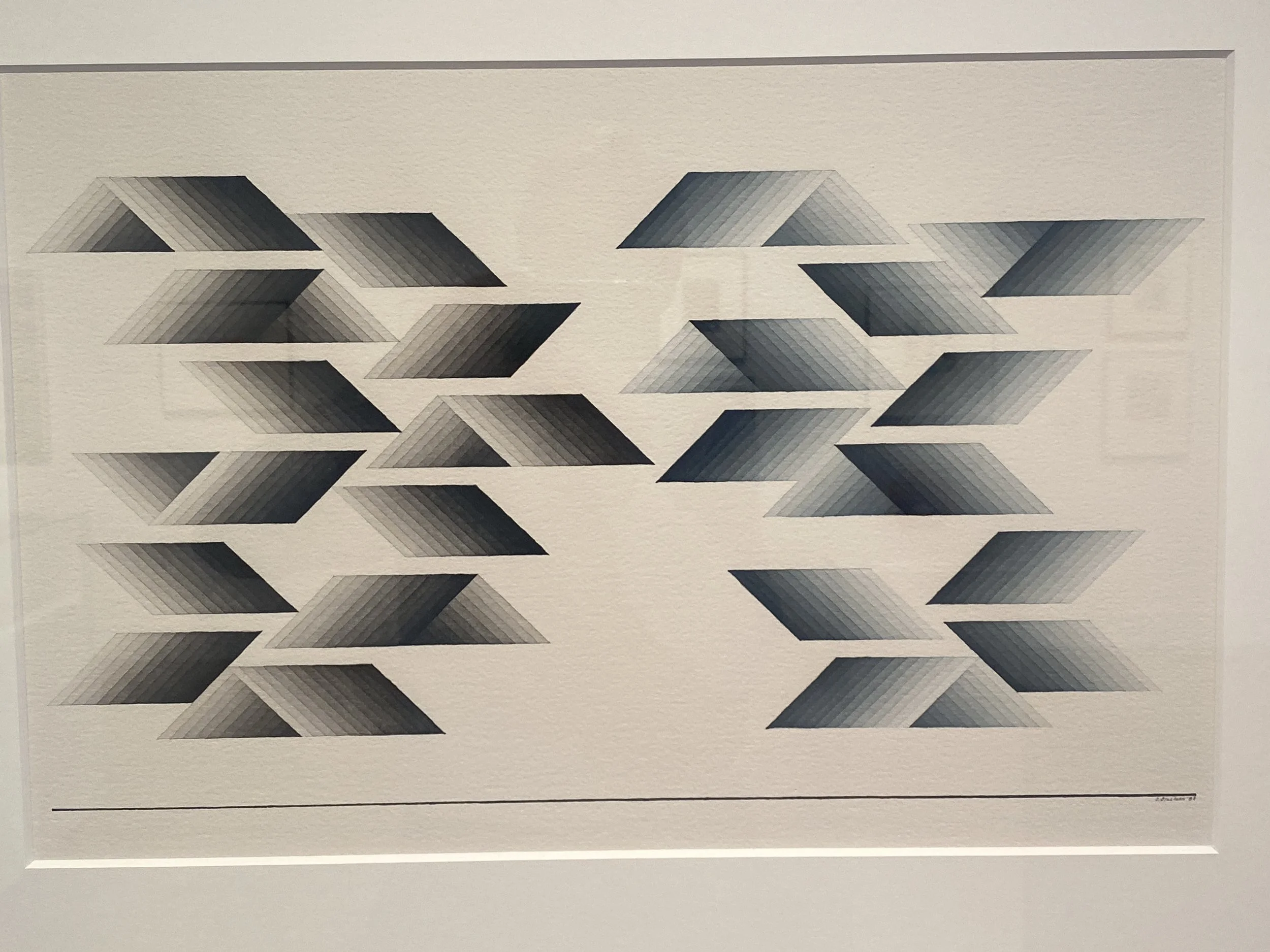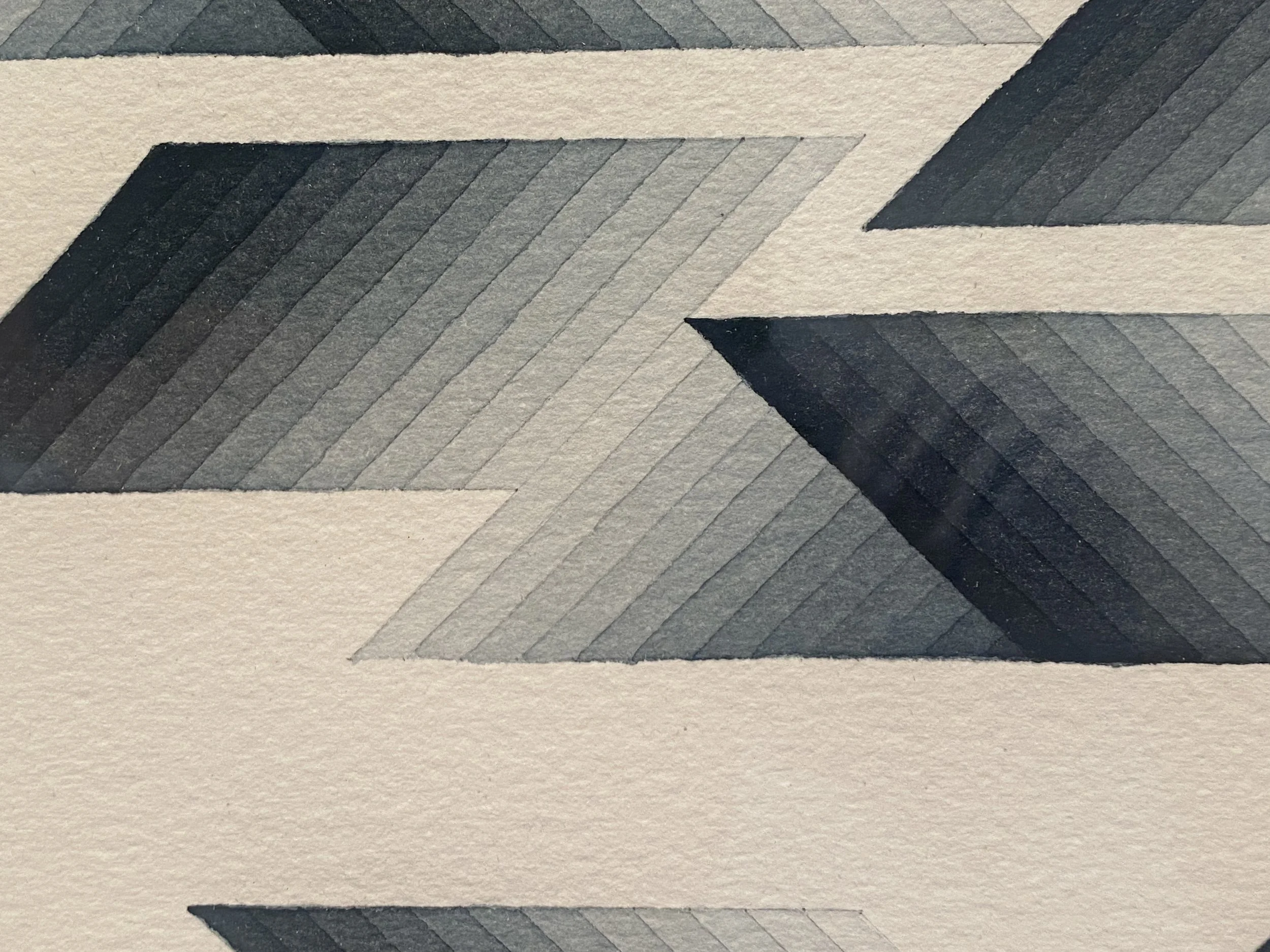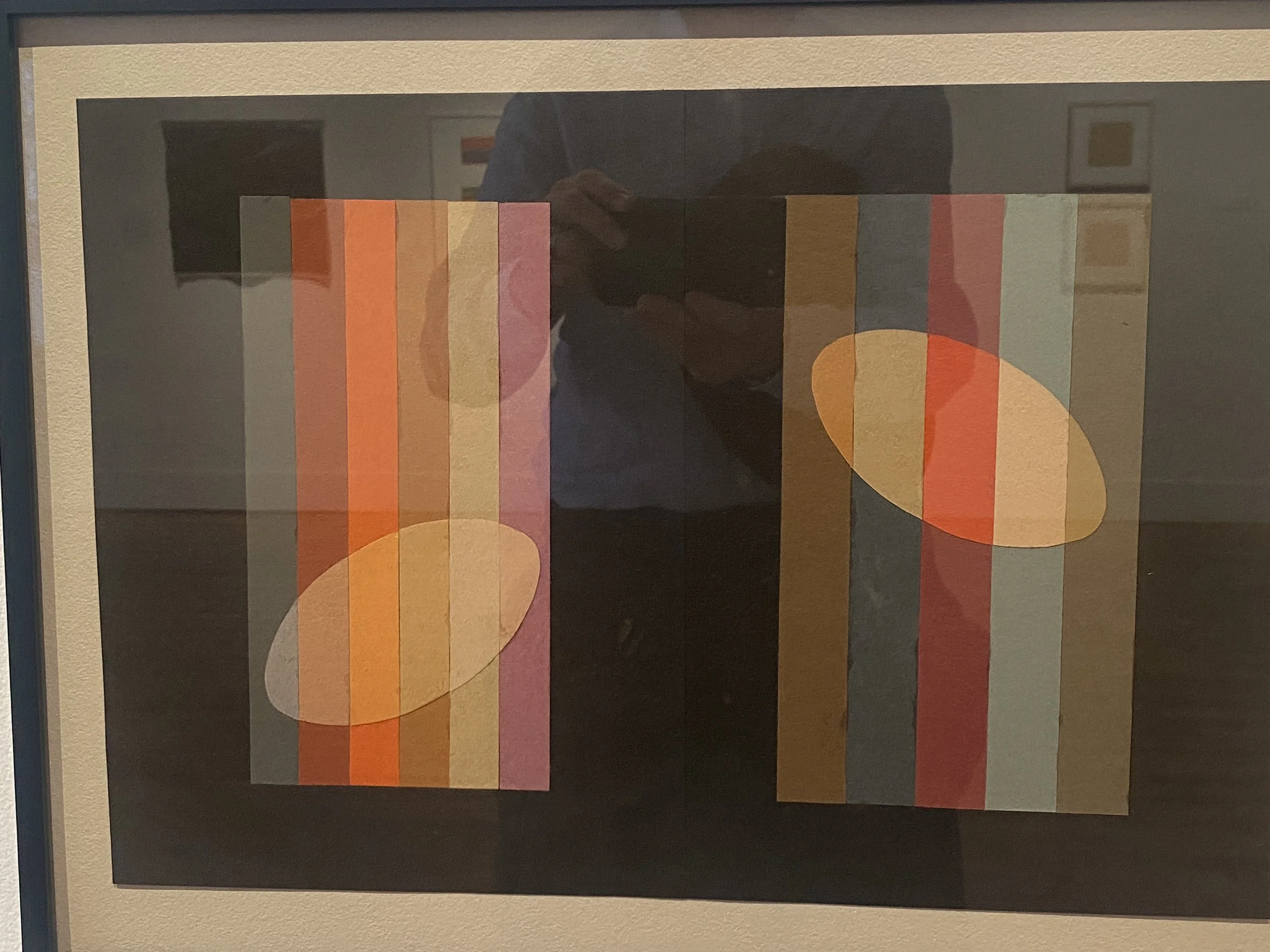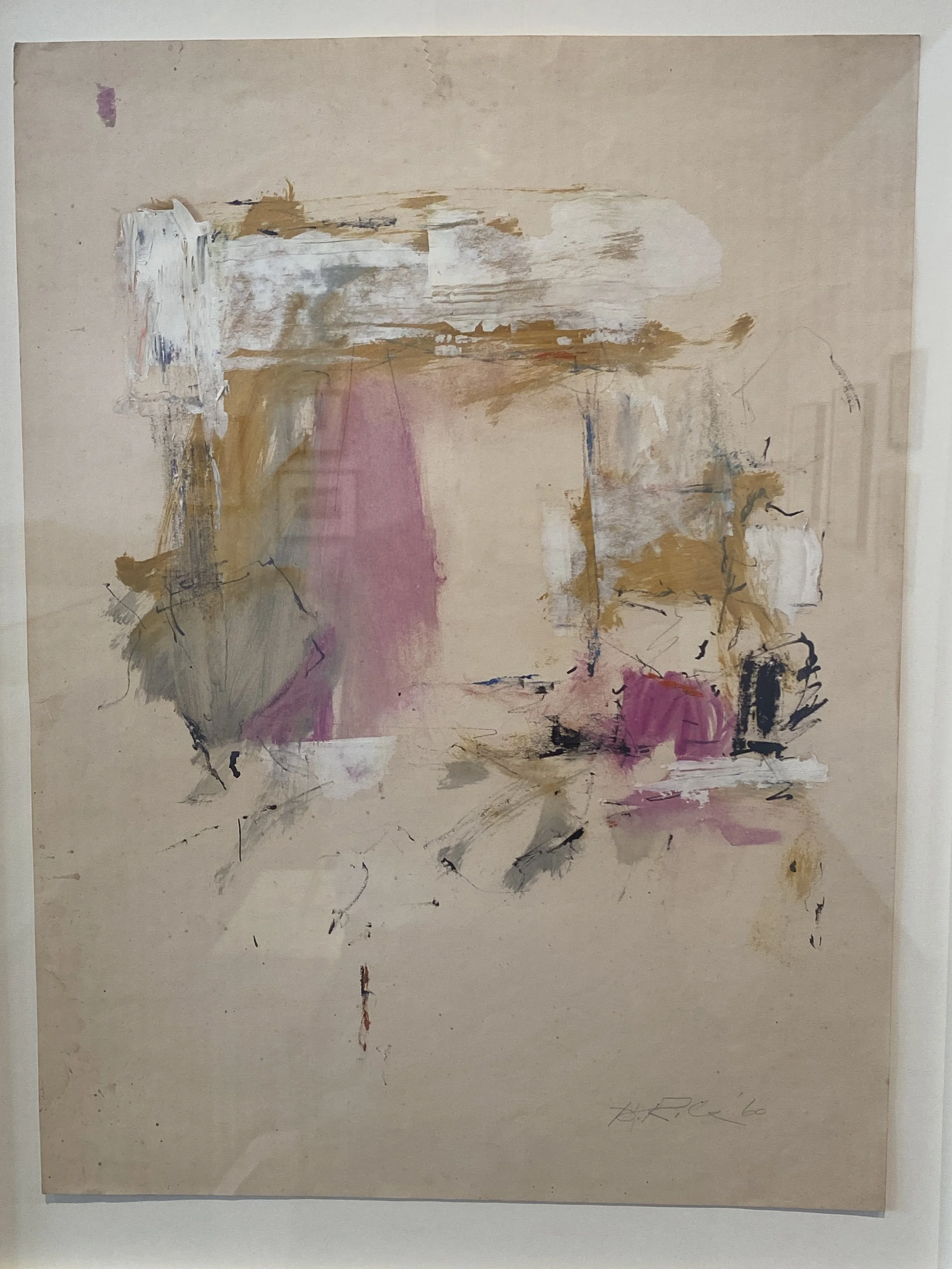Steal from... Black Mountain
/Last week, you may recall, I was traveling. My Lovely First Wife and some friends went to Black Mountain, NC, near Asheville. It is a very small town crammed with arts and crafts and very good restaurants and breweries and distilleries. Highly recommended! (We stayed in a VRBO rental only a couple of blocks from downtown.)
It is also the former location of the legendary Black Mountain College (1933–1957), a tiny but incredibly influential liberal arts college: Buckminster Fuller, Josef Albers, John Cage, William deKooning, Cy Twombly, and more were either faculty or students there.
In nearby Asheville, the Black Mountain College Museum + Arts Center offers exhibits and a research library on the history of the Museum, and that was one of our destinations on the trip. The exhibit on display was a collection of works from artists at the College as well as current artists whose work shows the influence of Black Mountain. This is a post about STEALING FROM THE BEST in Asheville/Black Mountain.
untitled design studies, c.1948–1951 / W.P. Pete Jennerjahn / oil pastel on matboard / app. 12” tall
Black Mountain was a stronghold of abstract expressionism and minimalism, as evidenced in this piece. The colors are of course striking, but before you move on: How, exactly, did he create this? If you’re like me, you probably assumed the colored lines were drawn straight across each other, criss-cross. Look more carefully. (I for one want to know how he got — and maintained — such a fine point on oil pastels.)
untitled / emerson woelffer / ink on paper / app. 2’ x 3’
Woelffer was fascinated with pre-Columbian art and described himself as an “abstract surrealist.” He used the gestural techniques of Expressionism along with the automatism associated with Surrealism and Dadaism. This was one of two such pieces, and you can see the influence of both in this piece. As you look at it, think about how he would have started on this piece. What would you think would be the first “petroglyph” he threw down? How would he have used GESTALT and SUCCESSIVE APPROXIMATION to continue?
Somehow I failed to note whose notebooks/sketches these were. I think they may have been Si Sillman’s?
Studies and sketches
from a classroom notebook/handout on materials and stuff to think about.
If you arrived at Black Mountain with only a few tools in your kit — oils, graphite, watercolor, maybe — and you had been primarily interested in art on paper/canvas, this environment was designed to expand your horizons. If you had to codify your materials/approach, what would your handout look like?
untitled, 1982 / Sewell (si) sillman / watercolor and pencil on paper / app. 2’ x 3’
Again, a piece that needs you to pay closer attention:
untitled, detail
Mercy. I personally cannot imagine creating something this precise or detailed in design and execution. Again, how would you go about creating this?
color study, c. 1944 / roberta jean blair / construction paper mounted on matboard / app. 12” x 18”
At first glance this piece appears to be painted, but it is literally construction paper. Again, the precision of the slicing and dicing is both fascinating and daunting. Using the title as a jumping off point, what kind of “color study” is going on here? Was the selection of the long strips random, or did she play with different combinations before settling on one? Note that the pieces of the ellipses are not glued on top of the strips; the strips are trimmed to include the ellipses.
untitled, 1960 / dan rice / mixed media on paper / app. 18” x 24”
Dan Rice came to Black Mountain to study music composition but switched to art almost immediately. Clearly a member of the Abstract Expressionists, his work is a phenomenal example of the ABORTIVE ATTEMPT —> GESTALT —> SUCCESSIVE APPROXIMATION <— cycle. You simply cannot plan this kind of piece; you have to plop some paint down, stand back, try to see what needs to happen next, and start plopping again. What painting techniques and tools did he use to create each “action” in this work?
(Dan Rice was Mark Rothko’s assistant. If you have not seen the play Red, go do that.)
All of this art poked at my art button — why do I have all the supplies I need to experiment using all the prompts I’ve written about above if I’m not spending time using them? Cras melior est, amirite?
Next: Art in Asheville


